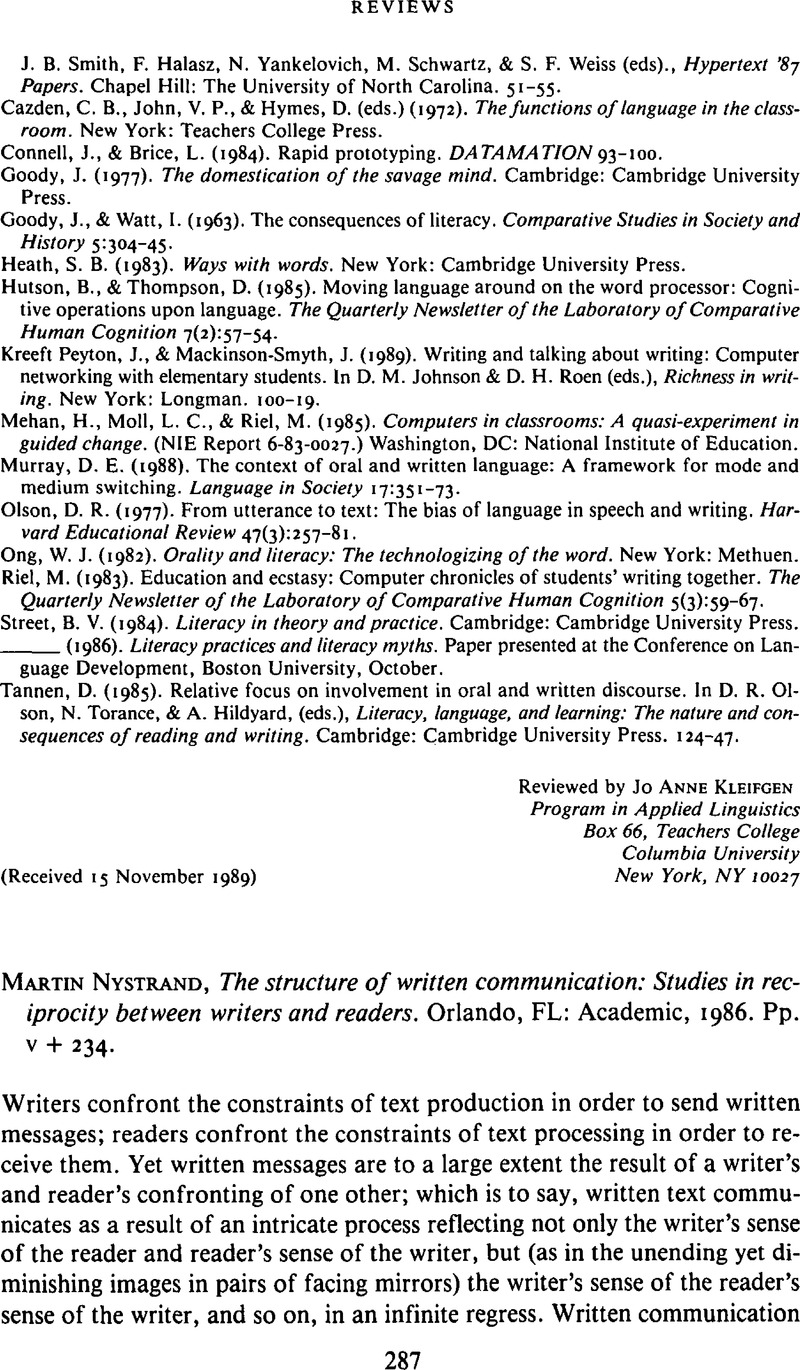Nystrand, M. (
1982). Rhetoric's “audience” and linguistics' “speech community”: Implications for understanding writing, reading, and text. In
Nystrand, M. (ed.),
What writers know: The language, process, and structure of written discourse.
New York:
Academic.
Google Scholar 